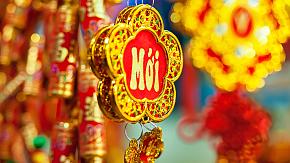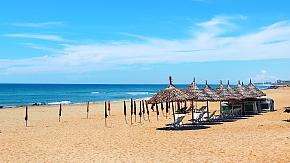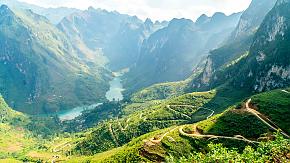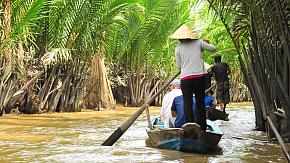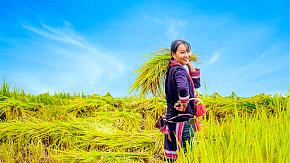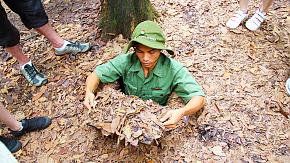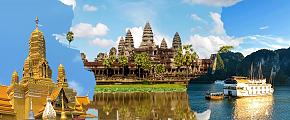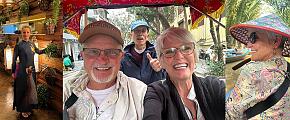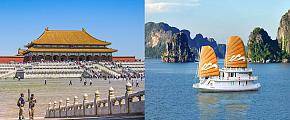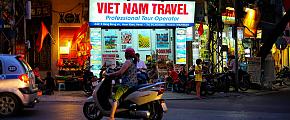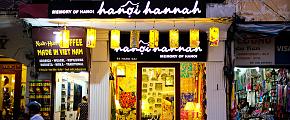Vietnam Travel Tips and Useful Suggestions
Vietnam is a wonderful country to visit, with incredible natural beauty and cultural complexities. To help you plan and make the most of your Vietnam tour, here are some handy tips and suggestions, from visas to the best time to visit, money and currency, best things to do, and more.
Best Time to Visit Vietnam
A long and narrow S-shaped country facing the South China Sea, Vietnam experiences distinctive climate patterns. On the same day, it can snow in the mountains in the far north while it can be rather hot and humid in the south. Overall, if you want to cover the whole country and see a bit of everything, the best times to visit Vietnam are from February to April and September to December.
Tet Festival
If you plan to travel during the New Year Tet Festival (the largest and most important public holiday in Vietnam, usually celebrated for a week in late January or early/mid-February), please note that transport and hotels are fully booked or very expensive, roadways are often crowded with traffic and restaurants, shops, and some tourist attractions are closed. So you may want to avoid visiting during the Tet holiday. If you have to go during this period, make sure you book everything as early as possible.
Best Places to Visit and Top Things to Do
Vietnam has a history of over a thousand years, fascinating culture spiced by the Chinese and French, over 55 colorful ethnic minority groups, and a charming coastline of over 3,000 km / 1864 mi long. You could travel the country for weeks and still not get bored as something new and exciting is always awaiting you somewhere in Vietnam. Hanoi, Halong Bay, and Sapa in the north of Vietnam, Hoi An, Hue, and Da Nang in the central, and Ho Chi Minh City and the Mekong Delta in the south, are just a few of the best places to explore in the country. Below is a list of some of the best things to do in Vietnam.
Cruise the Halong Bay
This is the highlight of any Vietnam vacation. Expect to marvel at towering limestone hills dotting the emerald water of the bay, admire the stunning sunrise or sunset on the deck, explore beautiful islands and amazing caves. Swim, kayak, or choose from a range of other exciting activities on offer.
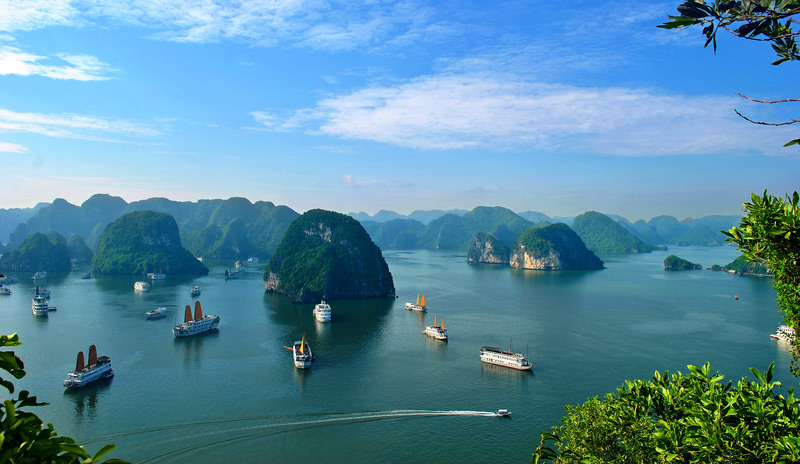 Halong Bay
Halong Bay
Wander the Bustling Old Quarter of Hanoi
This is a must-do for any first-timer to Hanoi. You can take a stroll through this maze of narrow streets and experience the hustle and bustle of the city.
Delve Into the Cu Chi Tunnels
The Viet Cong dug an amazing network of tunnels during the Vietnam War. Going down to these tunnels can be fun and rewarding, giving you an insight into the history of the war.
Take a Boat Ride Through the Mekong Delta
The Mekong Delta is a colorful, bustling part of Vietnam, and the best way to explore this area is to take a slow boat to see stilted houses, rice paddies, and the local way of life that has remained largely unchanged for centuries.
 Tourists exploring the Mekong Delta on a boat
Tourists exploring the Mekong Delta on a boat
Visit the Imperial City of Hue
Hue once served as the capital of Vietnam from the 19th century till the mid-1940s. The Forbidden Purple City, once the emperor's home, will offer you a taste of the glories of imperial Vietnam.
Explore the Ancient Town of Hoi An
With an amazing mix of well-preserved Japanese merchant houses, Chinese temples, and ancient tea warehouses, the historic town of Hoi An is the most atmospheric and delightful town in Vietnam.
Relax on the Beaches
Vietnam's beautiful, long coastline is blessed with blissful beaches that are within easy reach. Some of the most famous are My Khe Beach in Da Nang, Nha Trang Beach, Khem Beach in Phu Quoc, White Sand and Red Sand Beaches in Mui Ne.
Vietnam Tourist Visa
Citizens of most countries including the USA, Australian, New Zealand, Canadian passport holders require a tourist visa to Vietnam. If you are a passport holder of the UK, France, German, Spain, and Italy, you can visit Vietnam with visa exemption for stays of up to 45 days. No visa is required if you only visit Phu Quoc Island for no more than 30 days.
You can obtain a tourist visa (single/multiple entry) from the nearest Vietnamese Embassy or Consulate, which can take about 5 working days to process. A more convenient way is to apply for an E-visa, which is available to all countries. The E-visa for 1 month single entry costs USD 25 and normally takes 3 working days to process. If you're planning to enter Vietnam by air, you can apply for your visa in advance and collect it upon arrival at one of Vietnam's international airports, including Hanoi - Noi Bai International Airport, Ho Chi Minh City - Tan Son Nhat International Airport and Danang International Airport.
Money and Currency
The Vietnamese dong (VND; symbol: ₫) is the official currency of Vietnam. It comes in many denominations ranging from 200 to 500,000 (1 Us Dollar exchanges 26384 Vietnam Dong in 2025). The most frequently used denominations include VND1,000, 2,000, VND 5,000; VND 10,000, VND 20,000, VND 50,000; VND 100,000, VND 200,000 and VND 500,000.
 Vietnamese dong
Vietnamese dong
Major currencies such as US Dollars, British Pounds and the Euro can be exchanged at the airport, bureaux de changes or banks. US dollars are widely accepted (just make sure your bills are clean and crisp). ATMs can be easily found in major cities and credit cards such as Visa and Mastercard can be used in most hotels and shopping malls.
Tips:
1) It's best to request bank notes in smaller denominations as it is sometimes hard to get change from large notes.
2) It's advisable to carry a mix of cash (USD would be preferable), and credit cards.
3) It's suggested that you exchange any leftover dongs before leaving Vietnam because you can't take them out of the country (It's illegal!) and it's almost impossible to change the currency outside Vietnam.
What to Eat
Vietnam isn't just a beautiful country to see but also a wonderful place to taste some of the most delicious dishes on earth. The Vietnamese food is generally fresh and wholesome and features a wide range of ingredients, such as fish sauce, soy sauce, rice, fresh fruits and vegetables, and herbs and spices. Vietnamese Pho, Gỏi Cuốn, Bánh Cuốn, etc., you can sample when staying in Vietnam.
 Vietnamese culinary delights
Vietnamese culinary delights
Best Things to Buy
Travelers who want to bring something special back home at the end of their vacation will find Vietnam a delightful country to shop. The country offers different shopping experiences from small street stalls to bustling markets and modern shopping malls. You'll find beautiful handicrafts, exquisite textiles, colorful gemstones, silk, and clothing, etc. Some of the best souvenirs to take home include ao dai (traditional Vietnamese dress for women), Vietnamese coffee, conical hats, lacquer paintings, and water puppets. Ben Thanh Market in Ho Chi Minh City and Dong Xuan Market in Hanoi and Night Market in Hoi An are three of the best places to shop for souvenirs.
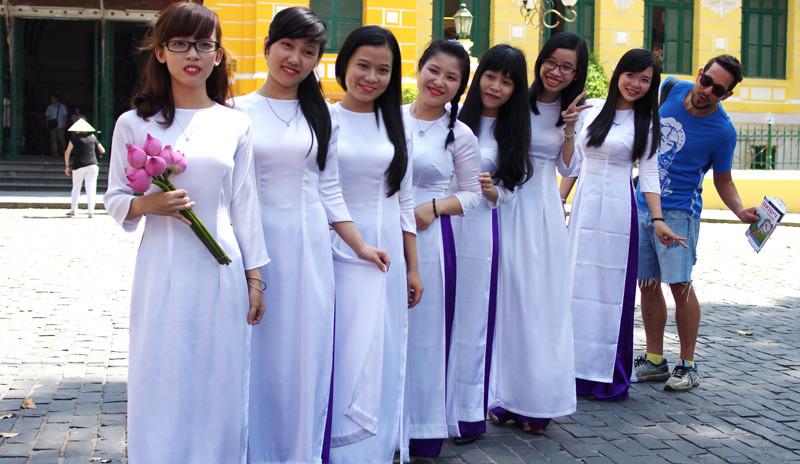 Vietnamese girls dressed in ao dai
Vietnamese girls dressed in ao dai
Stay Connected
Staying connected in Vietnam is easy and inexpensive. Free WiFi is available in hotels, restaurants, and cafés, and even most budget hostels in cities and towns. When there's no WiFi, you can use a local SIM card with mobile data to access the internet. A Vietnamese SIM card can cost as little as 5 US dollars and can be purchased at the airport upon arrival, credit kiosks, and phone shops.
There are four major mobile network providers in Vietnam, including Viettel, Vinaphone, Mobifone, and Vietnamobile. Viettel boasts excellent coverage across the country and offers free roaming in Laos and Cambodia. Make sure you have your phone unlocked before leaving your home country and bring your passport as it is needed to register your SIM card.
Safety
Vietnam is one of the most popular travel destinations in Asia and in general, it is a very safe country to visit. The Vietnamese government takes social order seriously and violent crime is extremely rare, even more so against foreign tourists. Though petty crime such as pick-pocketing, bag-snatching, and illicit use of drugs does exist, it is relatively low compared to other countries of the world. Anyone with good common sense should have a worry-free trip.
Tips
1) Keep anything valuable in safe places.
2) Avoid going out onto deserted streets late at night, especially if you are a women traveler.
3) It's highly recommended that you buy comprehensive travel insurance before your travel just in case anything unexpected may happen.
Health
Drinking Water
Don't drink tap water as it is often contaminated and may put you at the risk of water-borne diseases. Instead, stick to bottled water which is cheap and readily available everywhere from hotels to restaurants and shops. Just make sure the bottled water is sealed.
Recommended Vaccinations
Diphtheria, Hepatitis A, Tetanus and Typhoid are highly recommended for most travelers to Vietnam. If you are planning to visit the countryside or staying for a longer period, you may need the following vaccinations: Cholera, Hepatitis B, Japanese Encephalitis, Measles Mumps & Rubella, Rabies, and Yellow Fever. Consult your doctor for medical advice and make sure you are appropriately vaccinated before visiting Vietnam.
Clothing
The dress code in Vietnam is casual. Almost every Vietnamese wears a casual T-shirt, dress, jeans, or shorts. Yet, they will be very uncomfortable seeing people wearing very revealing clothing. This is especially the case in small villages or remote areas. When visiting religious places like temples, churches, and mosques, you should cover up from shoulders down to knees. So, a shawl (for women) and a pair of long trousers will come in handy.
Tipping
It is not customary or mandatory to tip in Vietnam. But it is always very much appreciated if you tip your local guides, drivers, waiters or other service workers for their good service. Most Vietnamese earn low wages and receiving tips is their only way to earn extra money. Besides, tipping also helps encourage future excellent service. The amount is entirely a matter of personal preference and depends on how good you think their service is.
Essential Things to Pack
Here are the essential items you need for your Vietnam trip.
1) Important travel documents: passport, visa (if required), transportation tickets including air/train/cruise tickets and your travel itinerary.
2) Money: Credit cards (Visa, Mastercard, etc.) and some cash (preferably US dollars).
3) Sunscreen, sunglasses, and a hat for sun protection.
4) Toiletries: moisturizer, hand sanitizer, deodorant, etc.
5) Med kit: medications for headaches, bad stomachs, motion sickness, etc.
7) Mosquito repellent.
8) Electronics: unlocked smartphone, camera, memory cards, portable charger, universal travel adaptor.
Hope these tips can be helpful for you to plan your Vietnam vacation. To free you from any hassle of trip planning, feel free to contact Odynovo for a personalized itinerary. It's easy and free! All you have to do is tell us where you want to go and what you like to see.
Related Posts You May Like
What Our Clients Say
Explore the latest verified reviews of Odynovo's travel services on Tripadvisor, Google, Trustpilot, Product Review and more trusted platforms.

